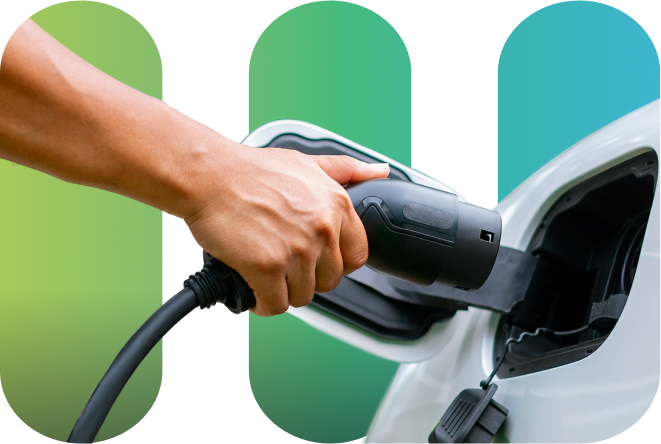Kia Soul EV
If you’re searching for an electric vehicle that blends style, efficiency, and cutting-edge technology, the Kia Soul EV is your answer. This eco-friendly vehicle delivers outstanding performance and comfort. In this article, we explore the standout features and benefits of the Kia Soul EV, illustrating why it’s the ultimate choice for environmentally conscious drivers.

Understanding Kia Soul EV high-voltage battery
The high-voltage battery in the Kia Soul EV is a pivotal component, powering the electric motor and enabling efficient, emission-free driving. Comprising lithium-ion cells, it stores and delivers substantial electrical energy, maximizing both range and performance.
When in use, the battery provides electricity to the motor, converting it to mechanical energy for propulsion. The battery management system optimizes energy distribution, enhancing performance and range. Benefits include a longer driving range, quieter operation, and reduced fuel costs, thanks to fewer gas station visits and less maintenance.
Proper maintenance of your Kia Soul EV’s high-voltage battery ensures its longevity and performance. Follow these tips to keep your battery in top shape:
Regularly inspect for damage, such as leaks or corrosion, and consult a technician if needed.
Clean battery terminals with a damp cloth to prevent dirt buildup.
Avoid extreme temperatures – don’t expose the vehicle to excessive heat or cold.
Prevent deep discharges by recharging when the battery is at 20% to 30% capacity.

The importance of the Kia Soul EV 12 V auxiliary battery
The 12 V auxiliary battery is vital to the smooth operation of your Kia Soul EV’s electrical components. Understanding its function is key to maintaining your vehicle’s performance. This battery powers essential systems such as the audio system, lights, and other electrical accessories, even when the main high-voltage battery is inactive. This ensures you can enjoy all the features of your Kia Soul EV without interruptions.
Over time, the auxiliary battery can experience issues. Recognizing the signs of a failing auxiliary battery is important to address potential problems early on, ensuring your Kia Soul EV remains reliable and performs optimally.
Common symptoms of a weak or dying auxiliary battery include:
Dimming lights: If headlights, interior lights, or dashboard lights are dimmer than usual, it could indicate a failing auxiliary battery.
Slow or erratic electrical system: Delays or inconsistencies in electrical components, such as slow power windows or a malfunctioning infotainment system, may signal a weak auxiliary battery.
Warning messages: Modern vehicles often display warning lights or messages related to battery issues. If you see such a message on your Kia Soul EV’s dashboard, it’s crucial to get it checked out.
It’s important to differentiate between auxiliary battery issues and main battery problems. While the main battery powers the drivetrain and starts the vehicle, the auxiliary battery supports electrical systems. If you notice issues with the engine running smoothly, it may indicate a problem with the main battery.
Ignoring a failing auxiliary battery can lead to loss of power to essential systems, potentially leaving you stranded or unable to operate certain features of your Kia Soul EV. Address battery issues promptly to avoid inconvenience or safety hazards.

Understanding the Kia Soul EV charging system
The Kia Soul EV uses a Type 2 charging plug, also known as a Mennekes plug, which is widely adopted across Europe and compatible with most public and home charging stations. This plug ensures a reliable and efficient connection for charging your Kia Soul EV.
For an optimal charging experience, it’s recommended to use a dedicated charging station or wallbox. These units are designed specifically for electric vehicles and provide faster charging speeds compared to standard power outlets.
Always use a certified charging cable compatible with your Kia Soul EV to guarantee a safe and reliable charge. Regularly inspect the cable for any damage and replace it if necessary to maintain safety and efficiency.
Charging your Kia Soul EV during off-peak hours, when electricity demand is lower, can reduce strain on the electrical grid and potentially lower your electricity costs. Additionally, the vehicle has regenerative braking technology, which recharges the battery while driving, extending the range of your EV.

Understanding the Kia Soul EV climate system
The Kia Soul EV’s climate control system delivers a personalized and comfortable driving experience. A standout feature is its advanced heat pump, which efficiently uses available energy to heat or cool the cabin, reducing energy consumption and lowering the vehicle’s carbon footprint.
Moreover, the climate system includes an air purification feature that filters out pollutants, dust, and odours, providing clean and fresh air inside the vehicle. Overall, the Kia Soul EV climate system enhances comfort while prioritizing energy efficiency and air quality, making every drive pleasant and eco-friendly.
Here are some tips to optimize the climate system’s efficiency in your Kia Soul EV, which extends its range and overall efficiency
1. Energy-saving tips: Set the temperature to a comfortable level rather than extreme settings. Use seat heaters or ventilated seats instead of the air conditioning or heating to reduce energy consumption. Pre-condition your vehicle while it’s connected to a charger to minimize battery use on the road.
2. Impact on range: The climate system can significantly affect your vehicle’s range. High levels of air conditioning or heating can reduce the range, so be mindful of your settings and use energy-efficient features to maximize range.
3. Smart climate control features: Use smart features, such as scheduling climate control during off-peak charging hours or using eco mode to optimize the system for maximum efficiency.

Understanding the Kia Soul EV electric motor
The Kia Soul EV’s electric motor is the powerhouse of this innovative vehicle. Let’s delve into its mechanism and the advantages it brings in terms of efficiency and performance.
Operating on electromagnetism, the motor consists of a rotor and a stator. When electric current is applied, it creates a magnetic field that interacts with the rotor’s permanent magnets, causing rotation and generating the mechanical energy needed to drive the vehicle.
One major advantage is efficiency. Unlike traditional engines, electric motors convert electrical energy directly into mechanical energy, resulting in higher efficiency. This allows the Kia Soul EV to cover longer distances on a single charge compared to conventional gasoline-powered cars.
Performance-wise, the electric motor offers instant torque, providing quick acceleration and responsive power, ideal for both city driving and highway merging. Overall, the Kia Soul EV’s electric motor is a marvel of engineering, delivering both efficiency and exhilarating performance.

Proper tire maintenance for Kia Soul EV
Regular tire maintenance is key to ensuring the performance and safety of your Kia Soul EV. By following these steps, you can keep your tires in top condition and extend their lifespan.
Rotating your tires regularly helps distribute wear evenly across all four tires, ensuring a smoother ride and preventing uneven wear that can reduce traction. We recommend rotating your tires every 10,000 km to 12,000 km.
Regularly check tire pressure and tread depth. Proper tire pressure improves fuel efficiency and enhances performance and handling. Use a tire pressure gauge to ensure tires are inflated to the recommended PSI as specified in your vehicle’s manual. Inspect tread depth with a tread depth gauge or the penny test; if it’s less than 2/32 of an inch, it’s time to replace your tires.
To maximize the lifespan of your Kia Soul EV tires, avoid excessive speeding and sudden braking, and do not overload your vehicle beyond its recommended weight capacity. Regular alignment and balancing can also prevent uneven wear and ensure a smooth ride.

Understanding the Kia Soul EV suspension system
The suspension system in your Kia Soul EV is essential for a smooth and comfortable ride. It absorbs road shocks, maintains tire contact, and ensures stability and control. Key components include springs, shock absorbers, and control arms, all working together to keep your vehicle balanced and minimize vibrations.
Keeping your Kia Soul EV suspension system in top condition is crucial for optimal performance and longevity. Here are some key maintenance tips:
Regular inspections: Schedule routine checks with a certified technician to assess the condition of your suspension components. They can identify wear or damage and recommend necessary repairs or replacements.
Wheel alignment: Proper alignment is vital for suspension functionality. Misaligned wheels can cause uneven tire wear and affect overall stability. Regularly check and adjust wheel alignment as recommended by your manufacturer.
Shock absorbers: These control the movement of your suspension. If you notice excessive bouncing, uneven tire wear, or a bumpy ride, it may be time to replace them.
Springs: Supporting your vehicle’s weight and absorbing impacts, springs should be checked for sagging or damage. Replace worn-out springs to maintain proper suspension function.

Understanding the Kia Soul EV brake system
The Kia Soul EV brake system incorporates advanced features and technology for optimal performance and safety. Key features include:
Electric parking brake (EPB): Replacing the traditional handbrake lever, the EPB offers convenience and a space-saving design. With a push of a button, it engages and disengages, providing a secure hold when parked and automatically releasing when the accelerator is pressed.
Auto hold: Enhancing convenience during traffic jams or at lights, the auto hold function keeps the vehicle in place without needing to keep your foot on the brake. This reduces fatigue and improves fuel efficiency by minimizing unnecessary brake usage.
Regenerative braking: This technology extends battery life by converting kinetic energy during deceleration into electrical energy to recharge the battery, reducing reliance on friction brakes and increasing overall efficiency.
These advanced features ensure the Kia Soul EV provides a smooth, reliable driving experience while maximizing energy efficiency and battery life.
Tips and Tricks for Your Vehicle
Would you like more information, tips and tricks for your electric or hybrid vehicle?
See Our Resource Centre

